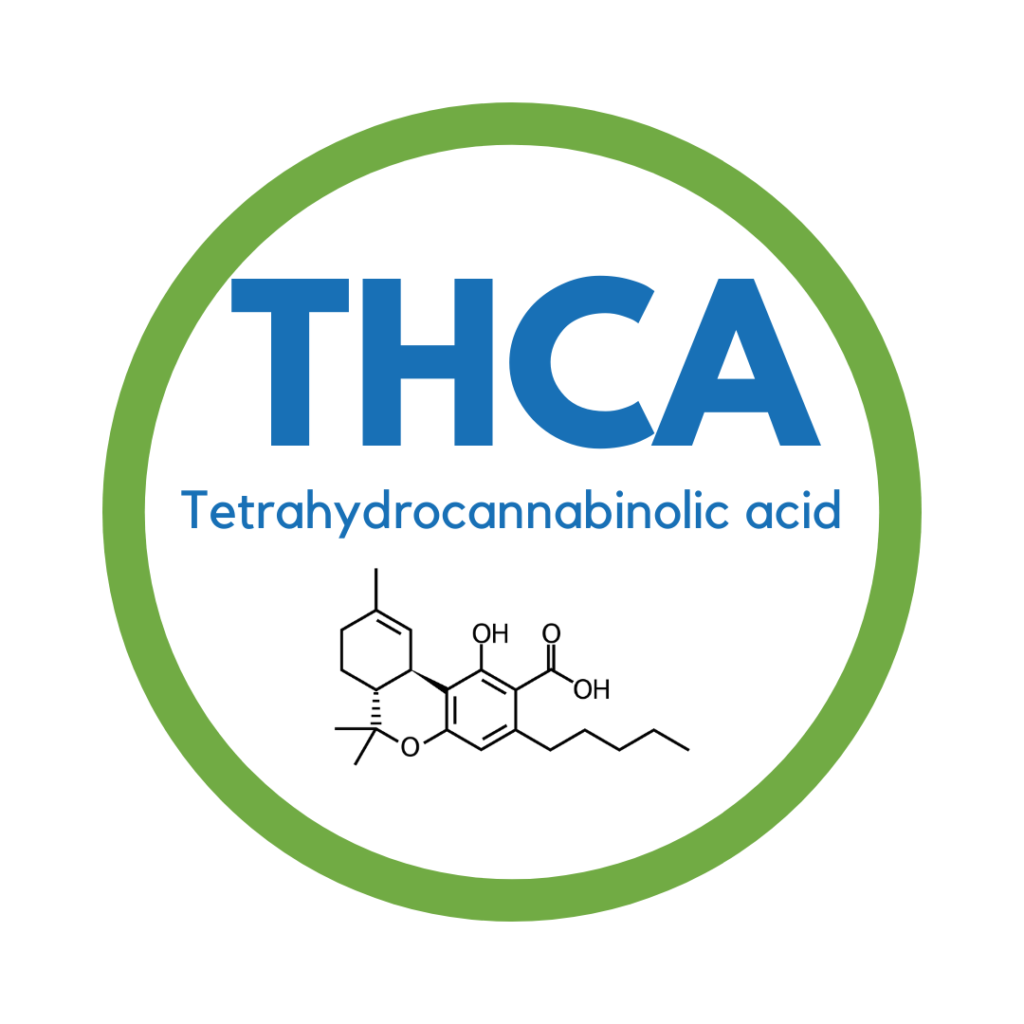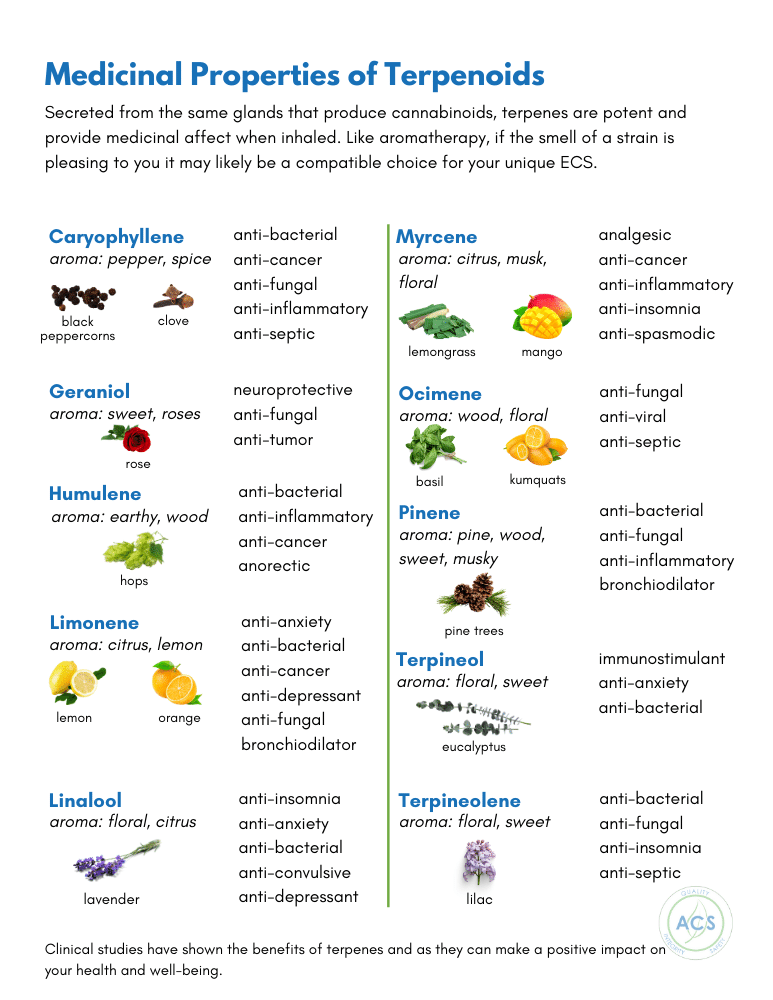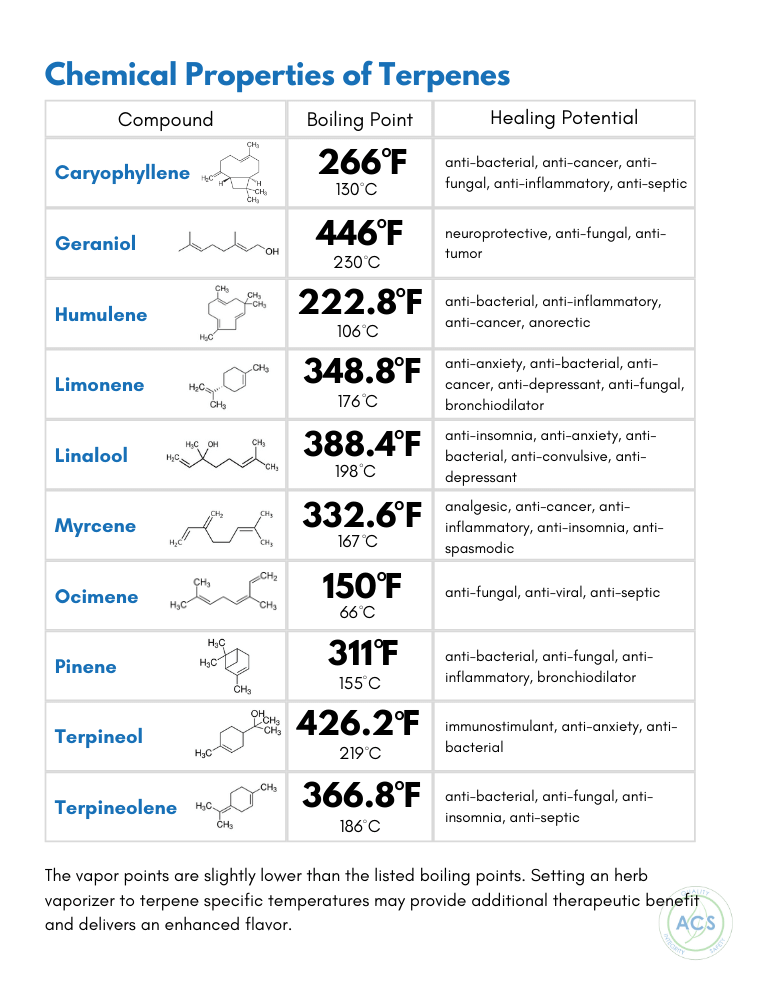
CANNABIS COMPOUNDS
Cannabis produces trichomes, which are small spheres of cannabis resin that contain therapeutic compounds. Different strains have different Cannabinoid, Terpenoid, and Flavonoid composition, producing various effects to benefit a wide range of medical conditions.
Cannabinoids
Cannabidiol
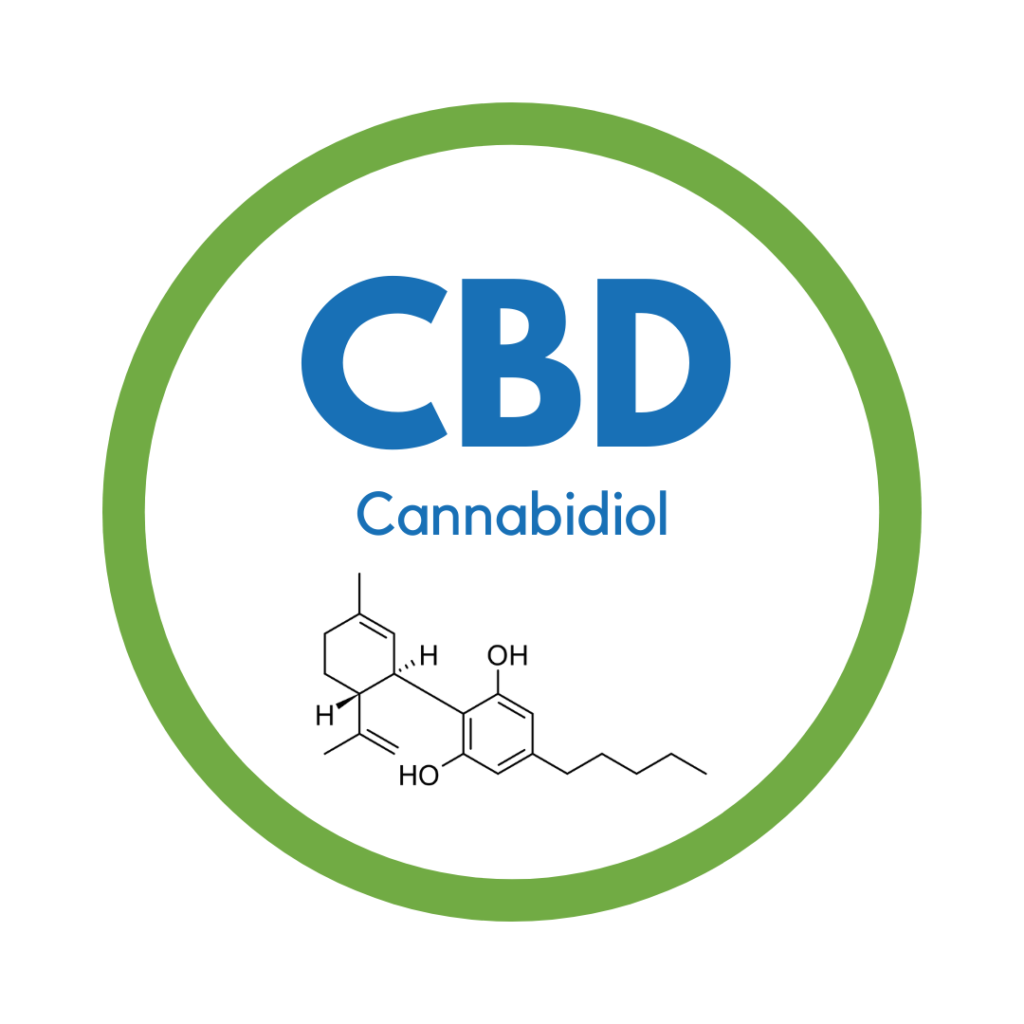
Cannabidiol, or CBD, is one of the most abundant plant-based Cannabinoids and has a multitude of medical benefits. CBD is non-intoxicating and counteracts the “high” felt with THC. Potential benefits of medicating with CBD may include:
- Reduces Inflammation
- Relieves Anxiety
- Tranquilizing and Antipsychotic
- Modulates the Immune System
- Relieves Pain
- Kills or Slows Bacterial Growth
- Reduces Blood Sugar Levels
- Reduces Nausea and Vomiting
- Reduces Seizures
- Reduces Risk of Artery Blockages
- Inhibits Tumor Growth/Cancer Cells
- Protects the Nervous System
- Suppresses Muscle Spasms
- Reduces Small Intestine Spasms
Delta-9-Tetrahydrocannabinol
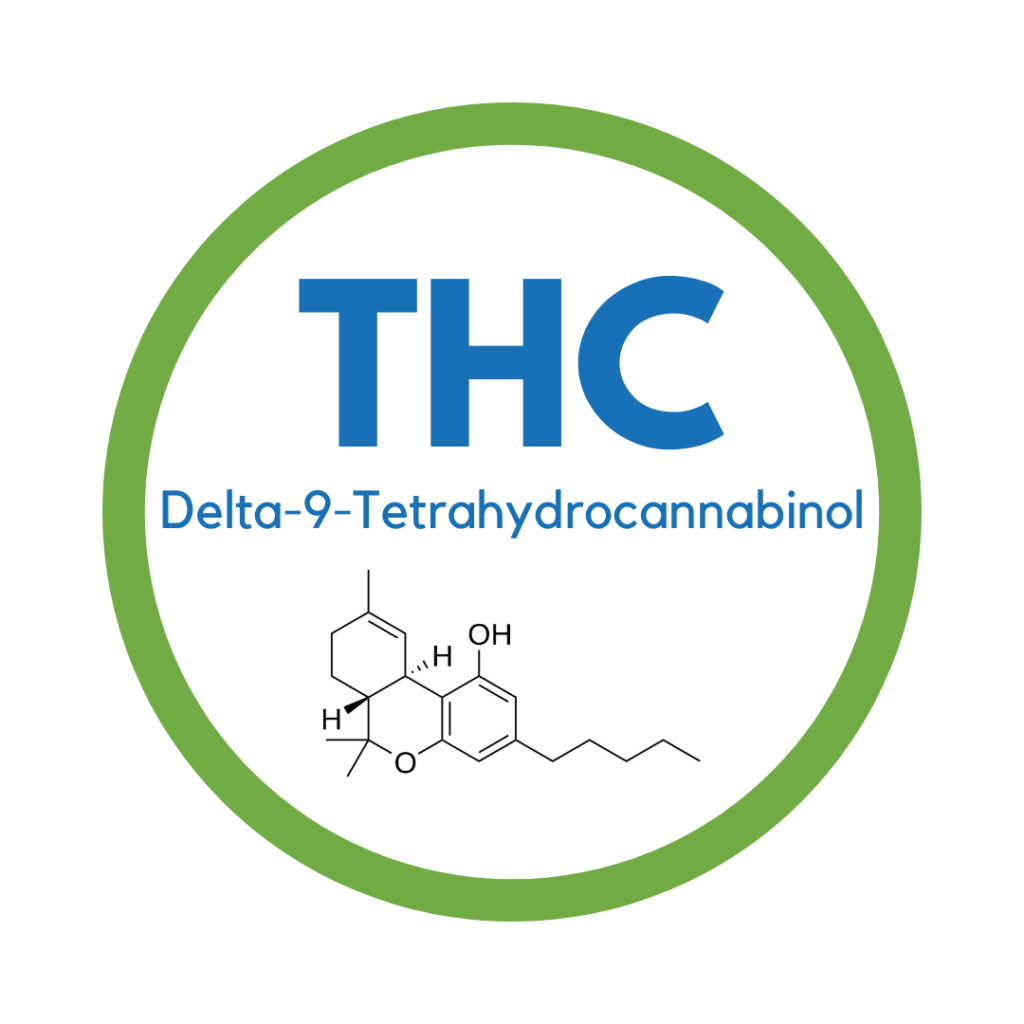
Delta-9-Tetrahydrocannabinol, or THC, is the chemical compound know for the psychoactive “high” component of medical marijuana. THC works by binding to cannabinoid receptors concentrated in the brain and central nervous system to produce intoxicating effects. Potential benefits of medicating with THC may include:
- Relieves Pain
- Reduces Nausea and Vomiting
- Reduces Inflammation
- Promotes Sleep
- Inhibits Tumor Growth/Cancer Cells
- Protects Nervous system
- Suppresses Muscle Spasms
- Relieves Anxiety
- Stimulates Appetite
Tetrahydrocannabinolic Acid, or THCA, is the chemical precursor to the psychoactive THC. When THCA is heated through combustion or baking the acid is lost. This process is called decarboxylation. THCA is non-intoxicating. Potential benefits of THCA may include:
- Reduces Inflammation
- Reduces Nausea and Vomiting
- Reduces Seizures
- Inhibits Tumor Growth/cancer cells
- Suppresses Muscle Spasms
Cannabis has many other Cannabinoids, with medicinal benefits. (CBG, CBN, CBC, CBDA, THCV to name a few). Cannabinoids and other important compounds, Terpenes (smell), and Flavonoids (taste) all contribute to cannabis’ healing properties. Healing effects are stronger when natural plant Cannabinoids and Terpenes are Kept Together – Not Separated. This is called the “Entourage Effect”, initially described by Dr. Ethan Russo. One study has shown full-spectrum products, containing all the original compounds found in the cannabis flower – Terpenes, Flavonoids and Cannabinoids, interact synergistically to enhance and boost their therapeutic effects. There are also less adverse effects when whole plant, rather than isolated or synthetic Cannabinoids are used. As medical use of marijuana has increased, research and personal testimonials have shown evidence of its many positive health effects.
Through studies and patient testimonies, Cannabinoids have been shown to help relieve symptoms associated with ailments and personal struggles. This includes, but is not limited to: Pain, Inflammation, Decreased Opioid Use, Anxiety, Depression, Epilepsy, Glaucoma, HIV/AIDS symptoms, Inflammatory Bowel Diseases-Crohn’s Disease and IBS, Movement Disorders due to Tourette Syndrome, Multiple Sclerosis, Nausea and Vomiting due to Chemotherapy, Post Traumatic Stress Disorder (PTSD), Insomnia, Weight Gain, Weight Loss, ADD/ADHD, OCD, Autism, Alzheimer’s disease, Arthritis, Parkinson’s, and Alcoholism.
Terpenes & Flavonoids
T&F are compounds in cannabis that interact to create the smell, taste, and color of a strain and determine how we experience marijuana through our senses. They also modulate the effects of THC and offer their own health benefits. At least 140 have been discovered. More research is needed to understand their healing potential.
Terpenes-Like aromatherapy, if the smell of the strain is pleasing to you it will likely be a compatible choice for you. Flavonoids-Providing the plant flavor and color, they act to protect the plant from light, pests, diseases and have medicinal properties. In cannabis, Terpenes are synthesized and stored inside the resin heads of glandular trichomes, along with Cannabinoids. Together Terpenes and Cannabinoids have been recognized as pharmacologically active and synergistic compounds that provide enhanced therapeutic effects. One study examines how Terpenes modulate the effects Cannabinoids, like THC and CBD, to provide subtle variations in effects.
Cannabis produces over 200 Terpenes, but only a few dozen of them are found in abundance. Chemical properties of Terpenes, such as boiling point, can be targeted and vaporized to enhance the therapeutic effect of the plant. This can be done using an herb vaporizer with custom heat settings, like the Loki Touch. The result-an intensified flavor blanketing the pallet. It’s important to keep in mind the vapor point will be at a slightly lower temperature than the boiling point.
Even if the varieties share nearly identical cannabinoid profiles different strains produce a range of effects. For example: the strain Black Raspberry has high amounts of Myrcene and Caryophyllene giving it an earthy, spice and slightly sweet fragrance. Comparatively the strain Silver Mountain contains high amounts of Terpinolene with low amounts of Myrcene and Caryophyllene for an herbal and floral fragrance. Patients report the effects of Black Raspberry are focusing with pain relief while patients report Silver Mountain to be motivating and energizing – great for physical activity. Both strains may have very similar Cannabinoid profiles, but the aroma, flavor, and effect are based on the Terpene composition. This illustrates the important role Terpenes and Flavoinoids play in a strains effect. At ACS we provide Terpene profiles to assist in honing in on your desired effect.
Talk with your Primary Care Physician and Certifying Cannabis Physician/Nurse Practitioner about the benefits of cannabis.
If you have additional questions our knowledgeable Patient Care Agents are here for you.
